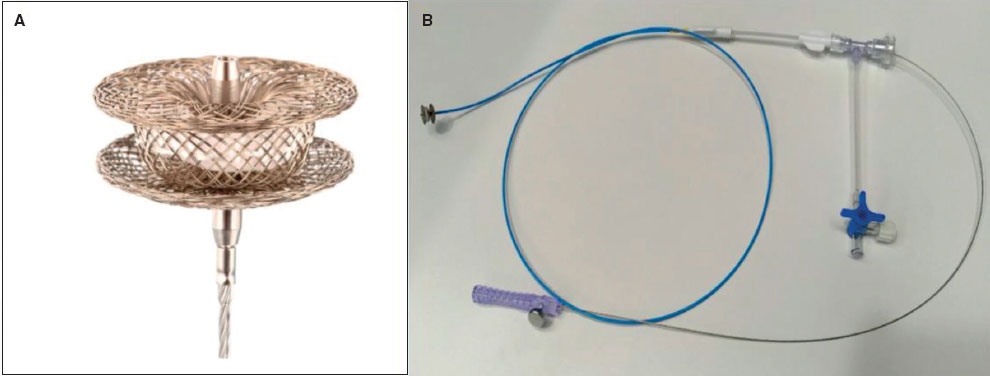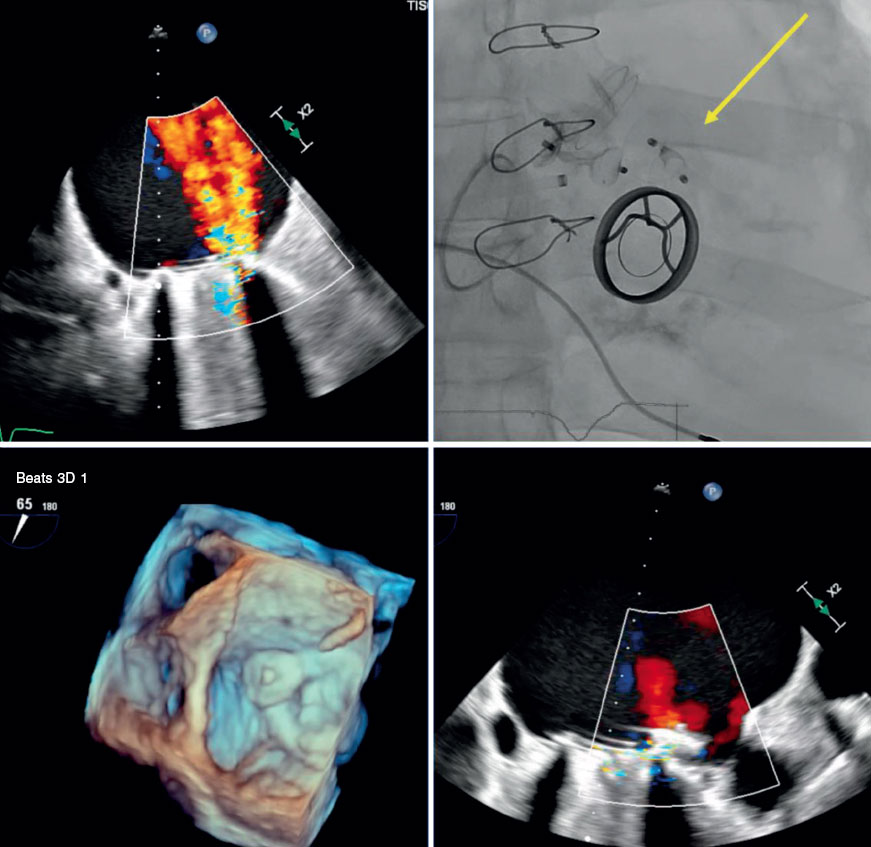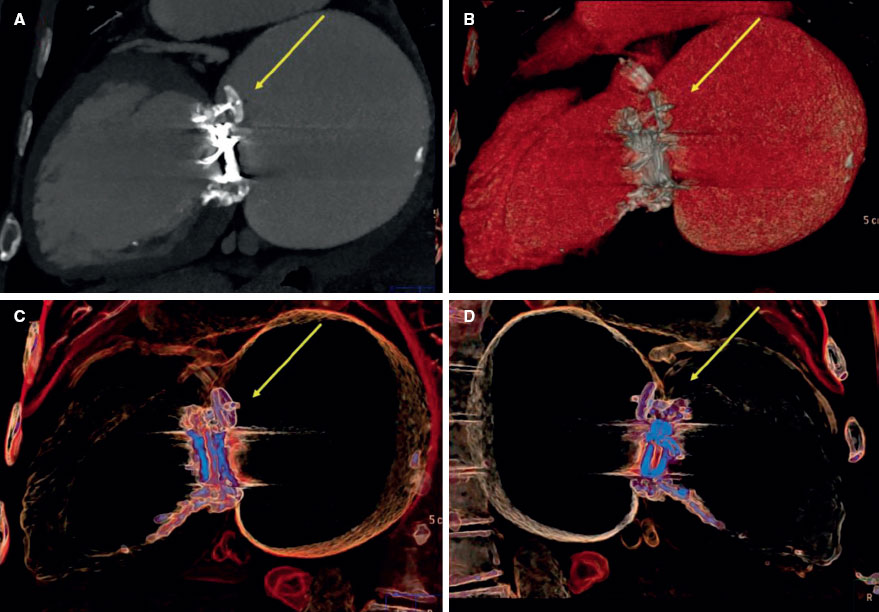A 70-year-old man underwent mitral and aortic valve replacement (Björk-Shiley, Pfizer, United States) in 1976, requiring a second aortic valve replacement (On-X, On-X Life Technologies, United States) with tricuspid annuloplasty in 2009. Subsequently, a symptomatic aortic paravalvular leak (PVL) was successfully treated with a 14/5-mm Amplatzer Vascular Plug III (Abbott, United States). The patient was later admitted for hemolytic anemia, when a new 11 × 3 mm mitral PVL was discovered. A percutaneous strategy was decided upon.
Under 3-dimensional transesophageal echocardiographic guidance and through a transseptal approach, the defect was crossed with a hydrophilic wire over a multipurpose catheter, requiring the use of a steerable introducer Agilis (Abbott, United States). An arteriovenous loop was created, and a 14-mm KONAR-MF VSD Occluder (LifeTech Scientific, China) (figure 1) was successfully deployed using a 6-Fr delivery sheath (figure 2 and figure 3; yellow arrow. Videos 1 and 2 of the supplementary data), without significant residual leak or prosthesis interference.
Figure 1.
Figure 2.
Figure 3.
Transcatheter PVL closures have been increasingly performed in recent years. The presence of a monodisc prosthesis (Björk-Shiley) with an extremely serpiginous PVL can be particularly challenging. At this point, we consider the Konar-MF could potentially perform better since it is larger than the Amplatzer Vascular Plug III but also flexible.
The KONAR-MF VSD Occluder is a self-expandable, double-disc device, requiring guiding catheters or 4- to 7-Fr sheaths for delivery. It is a potential device for PVL closure in selected cases as, after deployment, the device conforms to the shape of the defect due to its radial force, losing its self-centering property. The dual screw advantage allows antegrade and retrograde deployment, and the fabric could increase the rate of total closure, with its smaller disc diameter avoiding prosthesis interferences. To the best of our knowledge, this is the first time a KONAR-MF VSD Occluder has been used for PVL closure.
FUNDING
This article received no funding.
ETHICAL CONSIDERATIONS
The patient’s informed consent was obtained for this publication. This is a unique case and no sex or gender variables apply.
STATEMENT ON THE USE OF ARTIFICIAL INTELLIGENCE
No artificial intelligence tools were used in the preparation of this manuscript.
AUTHORS’ CONTRIBUTIONS
S. López-Tejero and P. Antúnez-Muiños wrote the manuscript. S. Merchán-Gómez and J. Rodríguez-Collado reviewed the literature related to this topic and critically revised the manuscript. I. Cruz-González led this project and was the main supervisor. I. Cruz-González and P. L. Sánchez-Fernández contributed to the design of the article, analyzed this topic, and critically revised the manuscript.
CONFLICTS OF INTEREST
I. Cruz-González is proctor for SMT. The rest of the authors have no conflicts of interest.
SUPPLEMENTARY DATA
Vídeo 1. REC Interv Cardiol. Cruz-González I. DOI: 10.24875/RECICE.M24000461
Vídeo 2. REC Interv Cardiol. Cruz-González I. DOI: 10.24875/RECICE.M24000461
* Corresponding author:
E-mail address: (S. López-Tejero).
@serlotes; @pjantunez; @icruzgonzalez; @pedroluisSF; @soraya_merchan

















